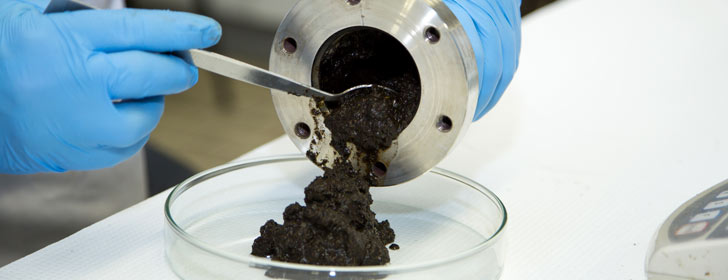Carbon Materials

Carbonization processes can convert a wide variety of biomasses into carbon materials: For dry biomasses by so-called slow pyrolysis, for wet substrates by hydrothermal carbonization. Possible applications of the products are
- activated carbons for purification of air/gas or (waste) water,
- storage media for hydrogen,
- electrode materials for batteries and fuel cells, supercapacitors and in adsorption columns for the separation of methane and CO2.
Here, too, the close connection to biogas plants is evident, because materials can be produced from fermentation residues that in turn upgrade biogas by separating carbon dioxide (press: filter made from fermentation residues ensures high-quality biogas).
Using biomass as a feedstock produces materials that are better than those on the market. The reason is the integration of nitrogen from the biomass and the formation of special structures called "hard carbon."
Supercapacitors and sodium batteries, which require electrodes made of "hard carbon," are particularly interesting in the context of e-mobility (TEDx Stuttgart: Why coffee is also good for e-cars). Another promising application is microbial fuel cells, which are being developed together with the State Institute for Agricultural Engineering and Bioenergy and the working group of Prof. Dr. Julia Fritz-Steuber. Here, organic substances from wastewater are degraded with the help of bacteria from the biogas plant, generating electricity.
Hydrothermal carbonization can be used to separate phosphate as struvite. There are other processes for recovering struvite from the liquid phase. The Hohenheim process is one of the few that can recover up to 80% phosphorus as struvite from sewage sludge or the separated solid phase of digestate (press: New method turns sewage sludge into harmless fertilizer).
